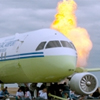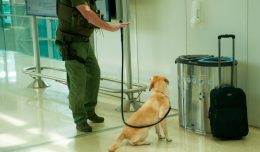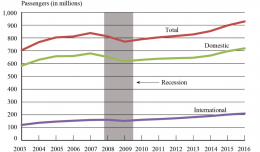A flight departing from Seattle-Tacoma International Airport has been seized by a hostage-taker demanding the release of a federal prisoner. Members of the Port of Seattle Police and SWAT units raced to the scene. Officers were quick to respond to the call, rapidly surrounding the plane and setting up a command center a couple hundred yards behind the tail. Three hours later, the remaining hostages were rescued and the situation defused.
Thankfully, this was not an actual incident. Part 139 of the Federal Aviation Regulation (FAR) requires that airports conduct a full scale airfield disaster preparedness and response exercise every 36 months, and the Port of Seattle took this opportunity to include Police and SWAT in the exercise. For the past six months the Port of Seattle has been planning this exercise, working internally and with external partners to ensure its success.
The exercise began at 6:00 am with the hostage crisis. Local volunteer TSA agents acting as hostages were taken onboard the training plane to enjoy the experience up close. To give Port of Seattle Police and the local SWAT team a challenge, different scenarios and tactics were tried and evaluated as possible techniques to be used in the event of a real hostage situation onboard a plane. While they would not allow photographs of the actual assault, some of the tactics we could see included utilizing snow plows (Seatac has snowplows?) to block the plane from moving and various assault techniques.
Following the hostage rescue scenario it was the fire and rescue departments’ time to shine. To get set up, over 100 volunteers positioned themselves in and around the plane. Each of the volunteers were assigned different injuries, from amputations to minor scratches, simulating what first responders might find in the event of a real plane crash. To make it more realistic, elaborate makeup and props were used to simulate the injuries: burns, broken bones, a couple of amputations and multiple impaling victims for good measure.
Soon after 9:00 am the second exercise began, a flour bomb (I’m told it was Gold Medal brand) was detonated nearby simulating the hostage taker going off the deep end. (It was unclear whether the police got him the first time or if there were multiple lunatics onboard). Fire crews rushed from their positions to meet the three minute response time required by the FAA. Once the fire crews arrived and extinguished the simulated fires, rescuers moved in and begun to triage the wounded. Passengers were moved to designated areas set up around the scene based on severity of injury. Those passengers walking around without major injuries were bused to a Non-Injured Care site, which is like an urgent care center. The remaining passengers are split into “Immediate” (the most urgent injuries to be transported to area hospitals), “Delayed” (the next priority for transport) and “Expectant” (the lowest priority for transport who are made as comfortable as possible while waiting).
While the exercise is used to evaluate the on-field personnel, it is equally an opportunity for the agencies involved to familiarize themselves with procedures. Some areas of focus were where to stage arriving ambulances prior to patient transport, how to enter the field for access to the crash site and the command structure while on scene. Fire and rescue personnel as far away as 20 miles respond to calls for assistance, so procedural awareness is key.
Back on the tarmac, victims were being wheeled away for their fake trip to the hospital, setup at an on-field hangar. Hopefully the experience and lessons learned from this drill are never needed, but it is a comfort to know that, in the event of an incident, emergency crews are ready to roll.








